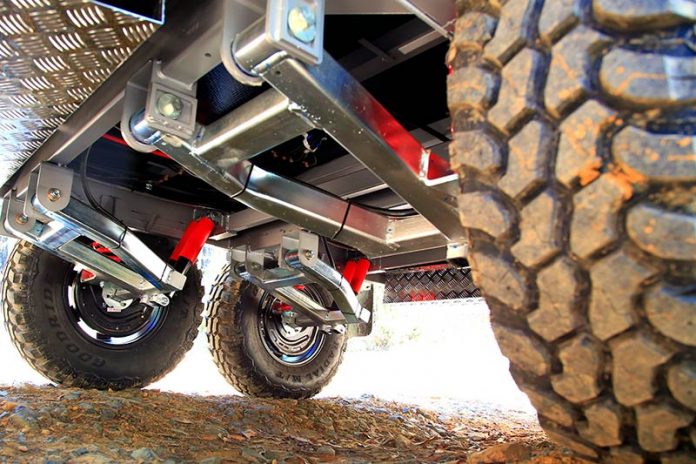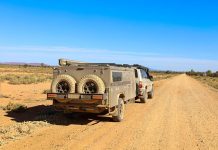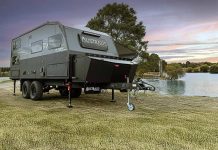The axle is, arguably, one of the least-considered components of any caravan, though they’re also one of the most important. After all, the weight of the entire van, minus the ball weight, rests on them. When was the last time you thought about your rig’s stub or beam axle?
AXLE FAILURES
An axle system that is fit for purpose and properly maintained should not fail. However, axle failures can and do occur. Why? We spoke to Neville Hauffe of Simplicity Axles and Suspension, the manufacturer of the Simplicity range of RV suspension systems and axles. He has been fabricating axles for decades.
“If the weight consistently exceeds the capacity of the axle system, then failures should be expected,” he said. “Failures occur when the suspension travel is compromised, meaning shock load is transferred into the suspension instead of the suspension medium, i.e., the spring or airbag.
“Failures also occur when the suspension is used outside of its design parameters, where the shock loading exceeds the designed shock load of the suspension. This usually equates to driving too fast for the conditions.”
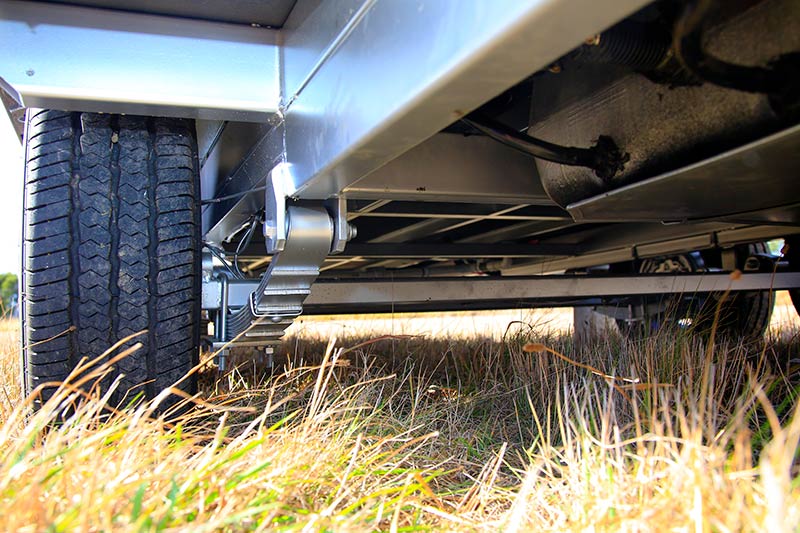
Owners of tandem vans have a particular responsibility when it comes to minimising stress on their rig’s running gear.
“It’s important that with tandem vans, you minimise the amount you ‘screw’ the van around when turning, especially on bitumen or concrete,” Neville said. “When you see the tyres being greatly distorted on the rims, the lateral forces on your running gear is massive, far exceeding, many times over, the lateral forces occurring under normal towing conditions.”
BUYING USED
If you’ve ever inspected a second-hand caravan with a view to purchase, you’ve probably looked for the usual things: rust, dents, signs of leaks, etc. There’s a good change that you didn’t inspect the axle(s).
According to Neville, it can be difficult to find a potential defect in an axle, but it’s usually easy to spot a repair.
“When inspecting second-hand vans, find out from repairers what specific issues affect various types of axles,” he said. “If you find a repair on one side of the van, check the opposite side to make sure it is okay. A repair doesn’t always have to indicate a failure. It could also have been from accident damage and the other side may be fine.
“Fatigue in stub axles is very hard to detect but when checking for a bent stub axle, initially check the gap between the backing plate and the back edge of the brake drum. This should be parallel.”
AXLE RATINGS
A trailer’s group axle rating should be equal to – but preferably greater than – the trailer’s Gross Trailer Mass. If it isn’t, there’s a big problem.
Fortunately, this scenario is uncommon. And according to Neville’s experience, the reverse is usually true. For its part, Simplicity stamps its products with the weight rating along with a serial number.
“To determine if the van is legal with the suspension/axles, we always advise owners to fill their water tanks and load their vans as they would travel and put it over a weighbridge,” he said. “With the van still connected to the tow vehicle, put the caravan’s wheels only on the weighbridge. This weight is the GTM and should not exceed the capacity stamped on the axle or the GTM stamped on the van’s compliance plate.”
Very good advice.
AXLE STEEL
Most stub axles in the Australian caravan industry, including some of Simplicity’s products, are made from a medium carbon steel, grade S1045.
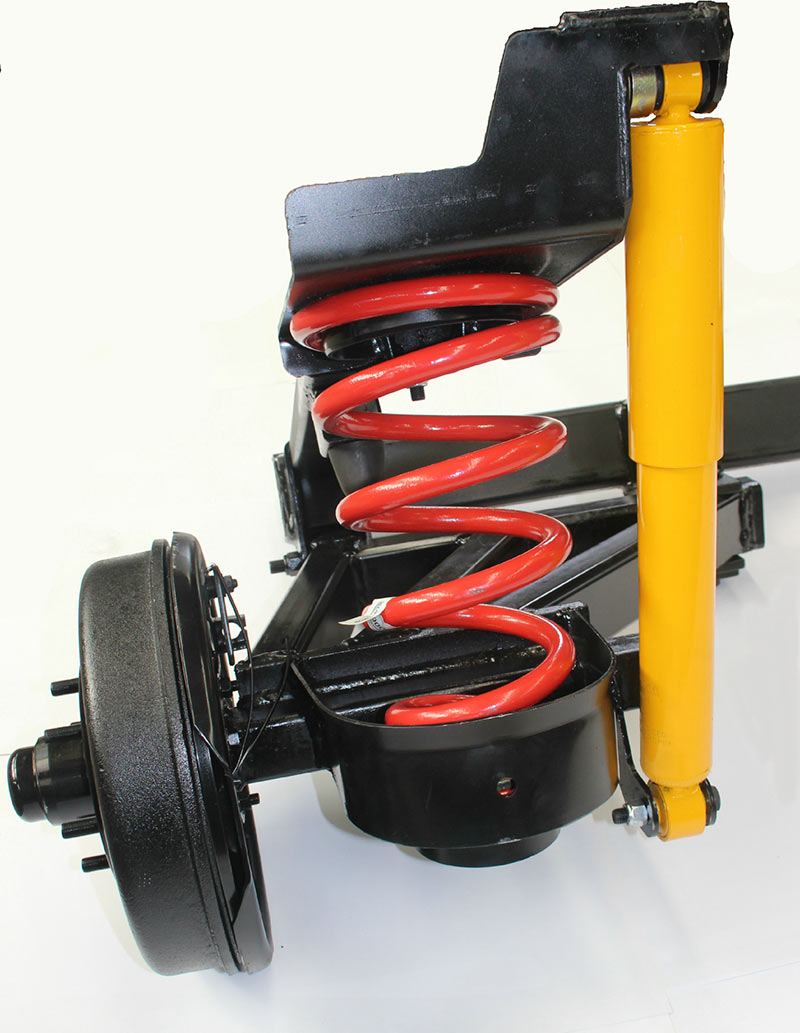
At Simplicity, heavier single axles rated over 2000kg, and tandem axles over 4000kgs, as well as other components used in high-stress applications, are made from a higher grade chrome moly steel, grade 4140.
WHEELS AND TYRES
When factoring in stub axle loads, the axle manufacturer should also also consider the unsprung weight of the wheel and tyre. Most 15in and 16in wheel and tyre combinations weigh in excess of 32kg. The dynamic forces created by this weight when bouncing over corrugations and pot holes is quite high. Most reputable local axle and suspension manufacturers allow for all of these loadings when rating their product.
“Be aware: what may work in North America and Europe does not cut it in Australia,” Neville said. “Our conditions are quite unique and need to be respected.”


